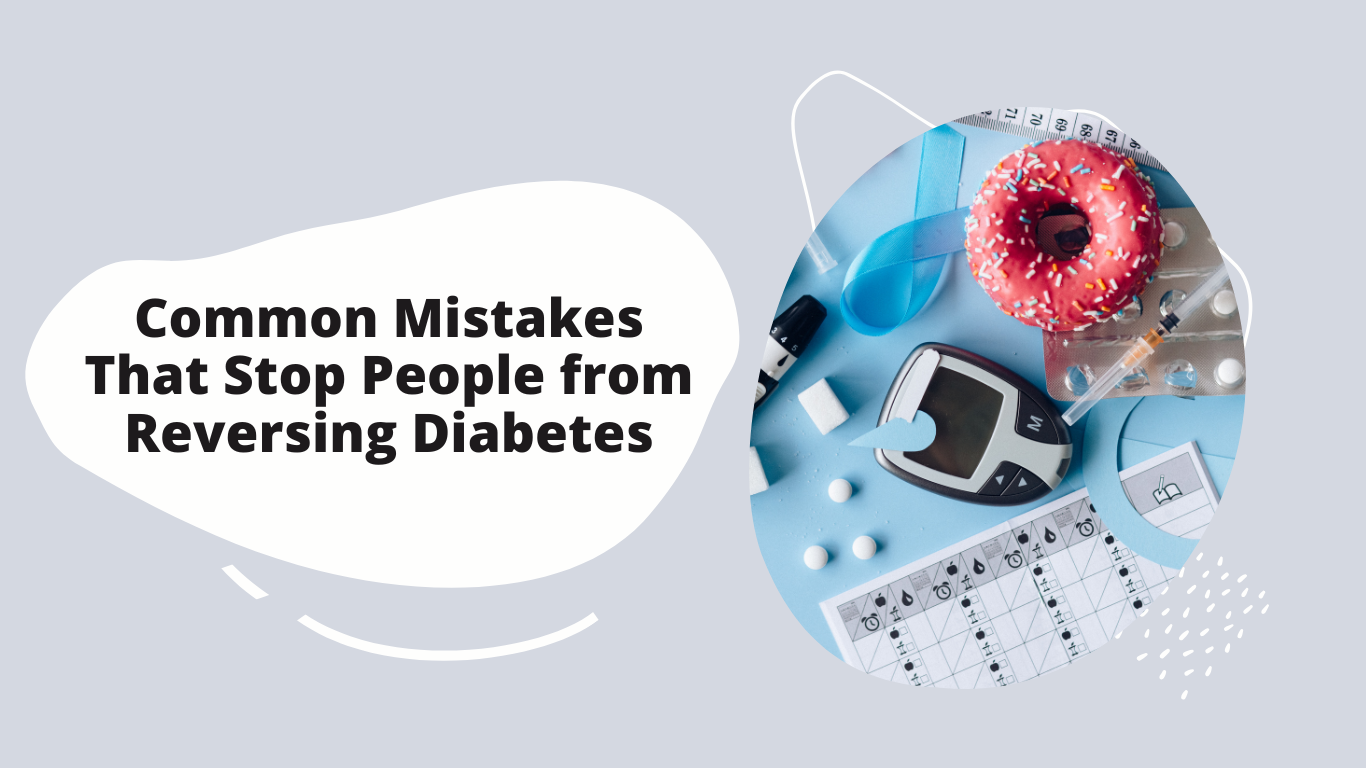Common Mistakes That Stop People from Reversing Diabetes

Introduction
Reversing diabetes is possible with the right approach, but many people unknowingly make mistakes that slow down or even halt their progress. The journey to stable blood sugar and improved health requires a combination of diet, lifestyle changes, and consistency. If you’ve been trying to reverse diabetes but aren’t seeing results, you may be falling into some common traps.
In this article, we’ll explore the biggest mistakes people make when attempting to reverse diabetes and how to avoid them.
1. Depending Only on Medication Without Lifestyle Changes
Many people rely solely on medication to control their blood sugar without addressing the root causes—poor diet, lack of exercise, and high stress levels. While medication can help manage diabetes, it does not cure or reverse it. True reversal happens when you make sustainable lifestyle changes that support better insulin sensitivity and glucose metabolism.
How to Fix This:
- Focus on whole, nutrient-dense foods.
- Engage in regular physical activity.
- Reduce stress through mindfulness and relaxation techniques.
2. Ignoring the Impact of Diet
One of the biggest misconceptions is that simply cutting out sugar is enough to reverse diabetes. The reality is that carbohydrates, processed foods, and unhealthy fats all play a role in blood sugar spikes and insulin resistance. Even “healthy” foods like whole grains and fruits can affect blood sugar if not managed correctly.
How to Fix This:
- Prioritize low-glycemic, high-fiber foods such as vegetables, nuts, and seeds.
- Avoid refined carbs, processed foods, and trans fats.
- Balance meals with protein, healthy fats, and fiber to prevent spikes.
3. Not Getting Enough Physical Activity
Exercise plays a crucial role in improving insulin sensitivity and helping your body use glucose effectively. However, many people either don’t exercise at all or choose the wrong type of exercise.
How to Fix This:
- Engage in a mix of strength training and aerobic exercises.
- Aim for at least 30 minutes of moderate exercise five times a week.
- Incorporate movement throughout the day, such as walking after meals.
4. Underestimating the Role of Stress
Chronic stress raises cortisol levels, which leads to increased blood sugar and insulin resistance. Many people focus solely on diet and exercise while ignoring stress management, which is a key factor in diabetes reversal.
How to Fix This:
- Practice deep breathing, meditation, or yoga.
- Engage in activities that bring you joy and relaxation.
- Get enough sleep and prioritize self-care.
5. Not Monitoring Blood Sugar Regularly
Without tracking your blood sugar levels, it’s hard to know what’s working and what’s not. Many people assume they are improving, but without data, they may be unaware of hidden spikes.
How to Fix This:
- Check fasting blood sugar levels daily.
- Keep a food and blood sugar journal to identify patterns.
- Work with a health professional to interpret your results and adjust your plan.
6. Expecting Immediate Results & Giving Up Too Soon
Diabetes reversal is a process, not an overnight fix. Many people start making changes but quit too soon when they don’t see immediate results.
How to Fix This:
- Set realistic expectations and track small improvements.
- Focus on long-term lifestyle changes rather than quick fixes.
- Stay consistent and patient with your efforts.
FAQs: Answering Your Questions About Diabetes Reversal
1. Can diabetes really be reversed?
Yes! Type 2 diabetes can often be reversed through diet, exercise, and lifestyle changes. However, staying consistent is key to long-term success.
2. How long does it take to see results?
Results vary, but many people notice improvements in blood sugar levels within a few weeks to months of making significant lifestyle changes.
3. Do I need to cut out all carbs?
No, but choosing the right carbs is crucial. Focus on fiber-rich, whole-food sources like vegetables, nuts, and seeds while minimizing processed and refined carbs.
4. What’s the best exercise for diabetes reversal?
A combination of strength training and aerobic exercise (like walking, swimming, or cycling) is best for improving insulin sensitivity.
5. Can stress alone cause high blood sugar?
Yes, chronic stress leads to increased cortisol production, which raises blood sugar levels. Managing stress is just as important as diet and exercise.
Final Thoughts
Reversing diabetes is possible, but it requires a well-rounded, consistent approach. By avoiding these common mistakes and making sustainable lifestyle changes, you can take control of your blood sugar and enjoy better health.
Stay committed, track your progress, and make gradual improvements to your diet, activity levels, and stress management. Every step counts towards a healthier future! 💚
